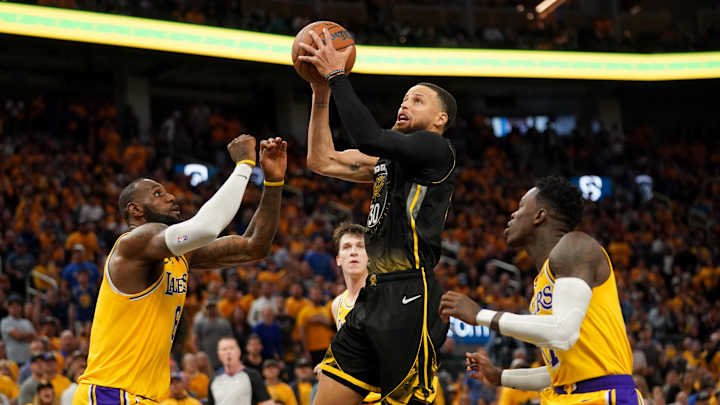The Golden State Warriors and the Orlando Magic are two teams with contrasting styles and roster compositions. Whether it’s a regular-season clash or a pivotal playoff matchup, their meetings often provide thrilling basketball action. This article breaks down their latest game, analyzing team performances, key players, and major takeaways in greater detail.
Game Overview
The latest Warriors vs Magic game featured an intense battle between the Magic’s young core and the Warriors’ veteran leadership. Both teams brought their unique styles to the court, leading to an exciting showdown that had fans on the edge of their seats.
Key Game Highlights:
- First Quarter: The Warriors came out firing, with Steph Curry leading the offensive charge. The Magic countered with aggressive defense and efficient ball movement, ensuring a competitive start.
- Second Quarter: Orlando started gaining momentum with their size advantage in the paint, creating second-chance opportunities and dominating the rebounding battle. Golden State, on the other hand, relied on their perimeter shooting to stay in the game.
- Halftime Score: The score remained close at halftime, reflecting the back-and-forth nature of the contest.
- Third Quarter: The Warriors made key adjustments, moving the ball more efficiently to find open three-pointers. Meanwhile, the Magic focused on inside scoring, leveraging their frontcourt strength to keep the game tight.
- Fourth Quarter: Both teams executed clutch plays, with Curry and Thompson hitting big shots while Paolo Banchero and Franz Wagner countered with strong finishes at the rim.
- Final Minutes: The game came down to the last few possessions, with the Warriors’ experience proving crucial as they executed plays efficiently in crunch time.
Key Player Performances
Golden State Warriors:
- Stephen Curry: The heart of Golden State’s offense, Curry’s ability to shoot from deep and facilitate plays kept the Warriors competitive.
- Klay Thompson: Delivered timely three-pointers, providing much-needed support for Curry.
- Draymond Green: Anchored the defense, disrupted Orlando’s offensive schemes, and contributed key assists.
- Andrew Wiggins: Brought defensive energy and made crucial mid-range jumpers.
- Jordan Poole: Came off the bench to provide an offensive spark when the starters rested.
Orlando Magic:
- Paolo Banchero: Showcased why he’s one of the league’s rising stars with strong inside scoring and versatility.
- Franz Wagner: A key two-way player, Wagner made an impact on both ends of the floor.
- Jalen Suggs: Brought defensive intensity, especially in limiting the Warriors’ perimeter threats.
- Wendell Carter Jr.: Controlled the glass with his rebounding prowess and provided inside scoring.
- Cole Anthony: Provided instant offense off the bench, keeping the Magic competitive.
Tactical Analysis
Warriors’ Strategy:
- Relied heavily on three-point shooting to stretch Orlando’s defense.
- Used fast-paced ball movement to create open looks.
- Focused on perimeter defense to counter Orlando’s inside scoring.
- Leveraged experience to execute better in high-pressure moments.
Magic’s Strategy:
- Used their superior size to dominate the rebounding battle.
- Played aggressive interior defense to contest Warriors’ drives.
- Slowed down the pace to limit Golden State’s transition offense.
- Focused on inside-out play, drawing defenders inside before kicking out for open perimeter shots.
Key Takeaways
- The Warriors’ Three-Point Shooting Remains Their Strength: Golden State’s ability to shoot from beyond the arc kept them competitive despite Orlando’s inside dominance.
- The Magic’s Young Core is Developing into a Playoff-Caliber Team: With Banchero and Wagner leading the charge, the Magic showed they can compete with elite teams.
- Defensive Execution Was the Deciding Factor: While Orlando controlled the paint, Golden State’s ability to force key turnovers and execute in crunch time made the difference.
- Coaching Adjustments Were Crucial: Steve Kerr’s experience in high-stakes games allowed the Warriors to make key in-game adjustments that proved vital in the final stretch.
- Ball Movement Dictated Success: The team that moved the ball better and created open looks had the advantage at different points in the game.
The Bigger Picture

What This Means for the Warriors:
The Warriors continue to rely on their core of Curry, Thompson, and Green, but the emergence of younger players like Poole and Wiggins will be essential for long-term success. They remain a dangerous team, especially in high-pressure moments, but their rebounding struggles against teams like Orlando could be a weakness in the playoffs.
What This Means for the Magic:
The Magic are proving to be a tough matchup for any team, thanks to their size, defensive grit, and improving offensive chemistry. While they may still be a season or two away from serious playoff contention, their performance against the Warriors suggests they are on the right trajectory.
Conclusion
The Warriors vs Magic matchup delivered an entertaining contest filled with strategic battles and standout performances. Whether it was Golden State’s elite shooting or Orlando’s physical presence, both teams showcased their strengths. As the season progresses, this game serves as a learning experience for both squads, setting the stage for future encounters.
Golden State’s experience ultimately helped them prevail, but Orlando proved they are no longer just a rebuilding team—they are a competitive squad capable of challenging the league’s best. With both teams having their eyes set on postseason success, future matchups between the Warriors and Magic will continue to be must-watch basketball.





